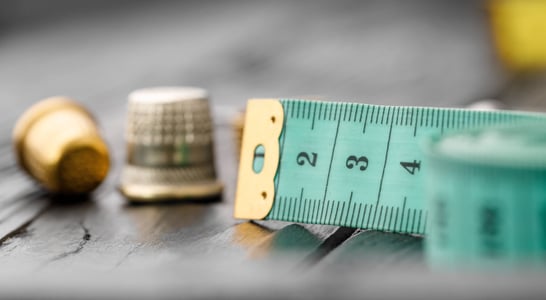
National Chemistry Week
Through intricate reactions and bonds, this noble science unveils the secrets of matter, forging advancements that enrich lives and shape the world.
For thousands of years, humans have been interested in the science behind what makes up the planet as well as the organisms living on it. From the time when early humans would extract metals from ore, make pottery with glaze or ferment beer and wine, people have been using chemistry to improve the quality of their lives – even if at the time they weren’t really sure why it worked that way!
Over the past centuries, the branch of science known as chemistry has developed and grown into an organized, systematic way of performing experiments and learning more about the matter that makes up the world. From medicines and soaps to glass and perfume, some of the most interesting discoveries have come about through the science branch of chemistry.
National Chemistry Week is here to celebrate and show appreciation for the myriad of ways that chemistry has had a huge influence and made a giant impact on the modern world!
History of National Chemistry Week
National Chemistry Week can trace its roots back more than 35 years, to 1987 when it was first celebrated by members of the American Chemical Society (ACS). The idea for the day was a vision of the former president of the ACS, Dr. George C. Pimentel. The hope for the purpose of the day was to offer opportunities for the public to learn more about the importance of chemistry in everyday life.
In the years since its founding, National Chemistry Week has been functioning as a community based event that works to unite a variety of sectors including schools, businesses, educators and other individuals. In fact, the day has won awards for excellence from the American Society of Association Executives. Each year, through the sponsorship of the ACS organization, this day gathers thousands of volunteers as well as dozens of chemical companies to reach millions of Americans about how vital chemistry is to their lives.
National Chemistry Week is scheduled to take place during the third week of October because it coincides with National Mole Day, which commemorates the importance of Avogadro’s Number (6.02 × 10²³) and also encourages people to take an active interest in chemistry.
Each year, the organizers of National Chemistry Week choose a theme that helps to inform the particular direction of the celebrations. Past themes over the years have included topics such as:
- Fabulous Fibers: The Chemistry of Fabrics (2022)
- Fast or Slow, Chemistry Makes it Go! (2021)
- Chemistry is Out of This World (2018)
- Forensics: Solving Mysteries Through Chemistry (2016)
Chemistry is an exciting area of science that offers tons of opportunities for discovery and development. National Chemistry Week takes time out each year to show appreciation for this scientific discipline while raising awareness about its unique influence on the world.
National Chemistry Week Timeline
300 BC
Aristotle declares four elements
Fire, air, water and earth are thought to be the building blocks that make up all matter. [1]
1803
John Dalton’s Atomic Theory
The Atomic Theory states that all matter is composed of atoms which are indivisible. [2]
1869
First periodic table
Dmitri Mendeleev, a Russian scientist, creates the framework for the periodic table.[3]
1896
Radioactivity is discovered
Henri Becquerel finds the properties of uranium through the study of naturally fluorescent minerals. [4]
1932
Neutron is discovered
British Scientist, James Chadwick, identifies the uncharged particle in isotopes, accounting for differences in atomic mass. [5]
How to Celebrate National Chemistry Week
Get on board and show some love to this science by celebrating National Chemistry Week in a whole host of ways! Check out some of these ideas to get started, or get creative and come up with some of your own:
Learn More About Chemistry
Those who are interested in celebrating National Chemistry Week may be interested in learning something more about the topic. Specifically, families and teachers can celebrate by sharing tidbits of trivia about chemistry with their kids to get more interested and excited about the topic.
Get started by checking out some of these fun facts about chemistry:
-
There are only two metals that do not have a silver tone: gold and copper.
-
Unlike other substances that shrink when they are cold, water expands when it freezes.
-
Because helium can defy gravity, superfluid helium can actually climb up walls.
-
On the Earth’s crust, the rarest naturally occurring element is Astatine.
Join an Illustrated Poem Contest
National Chemistry Week has offered a special opportunity for school-aged children to participate in a contest by submitting an illustrated poem around the topic of chemistry. Winners have been determined through their local sections and then moved forward and submitted on a national level. Creating words and pictures that go along with the year’s theme for the week could be an exciting way to participate. Check out past winners of the contest on the NCW website.
Plan a National Chemistry Week Event
Teachers, parents, scout troop leaders, after school clubs and others who are interested in chemistry can create events that fall in line with the celebration of National Chemistry Week. The National Informal STEM Education Network (NISEN) organizers offer connections on their website that can be helpful in locating resources as well as educational content, logos, artwork, videos, infographics and so much more. The NCW organization also offers educational and helpful resources on their website.
Perform Some Chemistry Experiments
One fun way to celebrate National Chemistry Week might be to show some appreciation for the science by performing some simple chemistry experiments at home. Do some research and make them on your own or grab the kids and have some fun with simple chemistry activities like these:
- Baking Soda Invisible Ink. Make a non-toxic invisible ink with baking soda and water, and use a paintbrush or cotton swab to write on paper. Then, reveal the message by using a heat source like a light bulb or an iron.
- Borax Snowflake. Made from borax, which is a salt compound, these “snowflakes” are actually a project that grows crystals. Other required materials include string, pipe cleaners, a wide mouthed jar, and boiling water. They can even be made colorful with food coloring.
- Coffee Filter Chromatography. Use colorful candies with water, salt, toothpicks and more than can help discover a range of colors on a coffee filter.
- Baking Soda Volcano. This non-toxic, classic science fair project is performed by adding baking soda to white vinegar that is placed inside a volcano made of flour, salt, and cooking oil.
National Chemistry Week FAQs
What is chemistry?
Chemistry is a branch of science that concerns itself with the composition of matter, its properties, reactions and more. [1]
Is chemistry hard?
Many people consider chemistry to be one of the most difficult subjects in college. [2]
Are chemistry and physics related?
Chemistry and physics are separate disciplines but they are both empirical sciences. [3]
Are chemistry jobs in demand?
The need for chemists in the job market is stable, but those with advanced degrees are more likely to secure employment. [4]
Also on ...
View all holidaysNational New Friends Day
In life's vibrant tapestry, weaving connections opens doors to fresh horizons, and sprinkles joy into everyday moments.
Suspenders Day
How could suspenders ever have gone out of style? Dig in your closet or visit a store to bring back one of the most fashionable accessories available.
Smart is Cool Day
Unlocking the power of knowledge and embracing curiosity leads to a world of endless possibilities. Smart is the new trendsetter!








